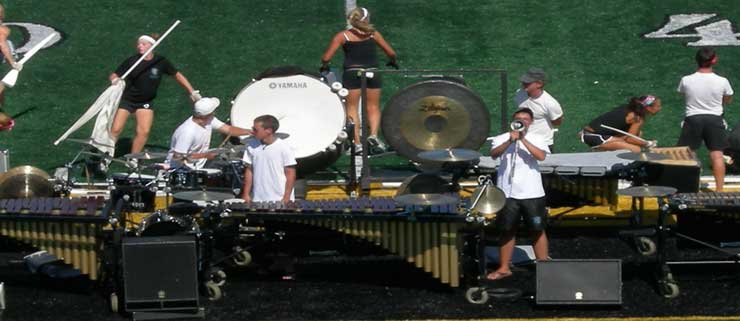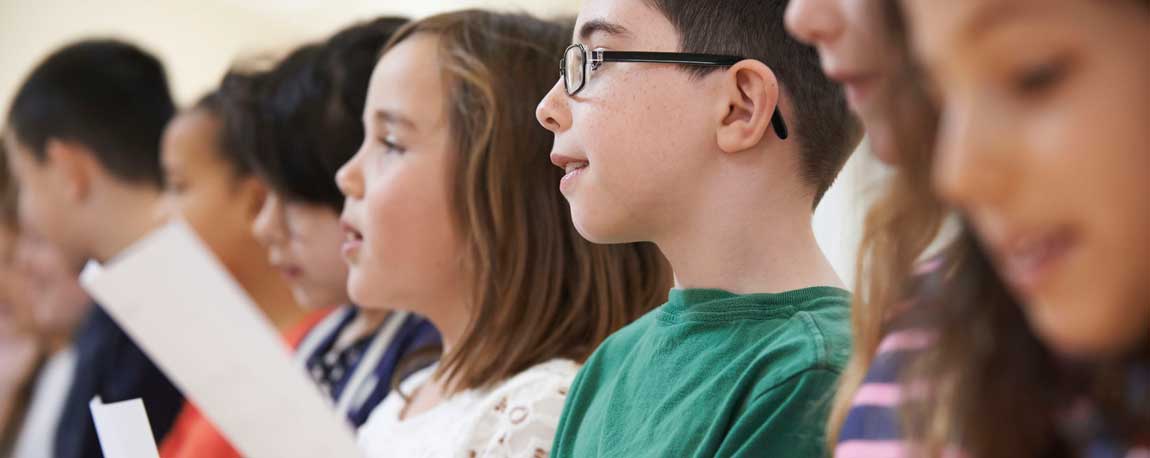It is really great to be back with my second column. This month, we will summarize and elaborate on the robust study you heard about in early October through MEF tweets and Facebook updates, which reported that verbal intelligence and brain plasticity were enhanced in a group of children following music training.1 Let’s review and elaborate on the results so that MEF has more in its armamentarium to defend and expand rigorous music education in our children’s schools.
The study involved 48 children aged 4-9 years of age, who were enrolled in a summer program in Toronto, Canada. The researchers had academic appointments at several institutions including the University of Toronto. Half the children received music training while the other half received visual arts training. The music training involved rhythm, pitch, melody, voice and basic musical concepts. Musical instrument instruction and performance were not part of this curriculum. Both training sessions involved interactive computerized programs. Sessions were 1 hour per day, 5 days/week over 4 weeks. Both groups received tests before and after the sessions to measure verbal and spacial intelligence and performance on an executive function task (“go/no goâ€). The study received the requisite approvals from governing ethics committees, parents and children.
Let’s go over what the study found and elaborate on a few points:
- 1. Mean scores on the verbal intelligence test were about 20% higher after pupils completed music training. There was no change in the group after visual arts training.
- The verbal intelligence test used was the Vocabulary subtest of the Wechsler intelligence test ─ a well-known standard. What this suggests is that training in music listening directly benefits verbal skills. You might remember from my last column that music education involves continuous co-stimulation of multiple brain regions and this is possibly the reason that it benefits children in other academic areas.
- 2. Neither group improved their scores on the spacial intelligence test after the training programs.
- The spacial intelligence test used was the Block design subtest of the same Wechsler test as mentioned in the previous point.
- 3. The group of children receiving music training, unlike the group receiving visual arts training, increased their performance on both parameters of the executive function task (“go/no goâ€).
- The go/no go task was based on an interactive and carefully timed computerized program. The children’s accuracy rate and reaction time in identifying the correct color (independent of the color’s shape) were measured. What the results from this go/no go task suggest is that training in music listening also benefits some executive skills. The increase in this executive task likely necessitated an increase in level of control, memorization and attention ─ all of which are required during music training.
- 4. Results from event-related potentials (ERP) for the go/no go task suggested that there was an increase in brain plasticity in children completing music training. There was no change in brain plasticity in children following visual arts training.
- For the ERP test, children were fitted with an elastic cap containing 64 electrodes for capturing the electroencephalogram (EEG). Other than having to wear the cap, an ERP study is painless. (Some of the kids probably thought the cap would make a great Halloween costume!)
- By analyzing the time course of the EEG waves during the go/no go task, researchers found an increase in brain plasticity in the brains of children who had received music training. This observation was based on an increase in the amplitude of the P2 component of the ERP over the parieto-occipital brain regions. You may recall from our last column this is where hearing and vision are centered. Based on the music training the children received, the involvement of these regions makes sense.
What is an electroencephalogram (EEG)? EEGs have been around since about the 1920’s. You may have heard about EEGs in the context of epilepsy, where they are still used today. Electrodes (64 in the present study) placed on the cranium pick up the electric activity from the brain that it is closest to. The EEG is the pattern of waves detected at each electrode. Different external stimuli produce characteristic changes to the resting wave patterns. For example, a picture or other image will increase the electric activity picked up by electrodes close to where vision is controlled. You might remember from the last column that these areas are called the occipital lobes.
What is an event-related potential (ERP)? When the EEG is used in association with a specific cognitive task such as the go/no go task, the measurement is called an ERP. The study of ERPs is a highly specialized branch of medical research. ERP waves are carefully studied over the course of the go/no go task. Waves from each electrode have unique properties but share basic components (e.g. P2 and N2/P3). Changes to the P2 component of an ERP are thought to represent changes in brain plasticity.
What is brain plasticity? There are a lot of definitions floating about. The one that makes the most sense is the brain’s ability to “re-wire†itself for the purposes of learning or remembering something new or more complex. This may necessitate the formation of new connections between neurons and/or the severing of existing connections. Remember that the majority of the connections between neurons are not like those within a circuit board. Neuronal connections are characterized by synapses ─ very small chemical gaps between axons and dendrites. We will elaborate on these concepts in a future column.
A few other thoughts on the study: In all likelihood, the increase in brain plasticity that corresponded to the increase in verbal intelligence is probably transitory. It would require years for music training to have a long-term impact on verbal intelligence and other cognitive areas. As mentioned earlier, musical instrument instruction and performance were not part of this curriculum. One would expect more regions of the brain to be affected with these additions.
We have covered a lot of ground and still have a lot more to cover in future columns. Please feel free to use the comments sections below to leave us your thoughts and topics you would like addressed in future columns. Looks like we will need to be in touch again soon!
1Moreno S, Bialystok E, Barac R, Glenn Schellenberg E, Cepeda NJ and Chau T. Short-Term Music Training Enhances Verbal Intelligence and Executive Function. Psychological Science. Published online 3 October 2011. DOI: 10.1177/0956797611416999
This article is the second in a series written by Christopher Veirek, PhD, and being presented by the Music Empowers Foundation, a non-profit organization that provides financial support to other nonprofits that offer innovative music education programs to communities with limited or nonexistent programs. You can get more information when you visit the Music Empowers Foundation web site







 Scroll down to view the comparison chart of over a dozen different portable digital audio recorders.
Scroll down to view the comparison chart of over a dozen different portable digital audio recorders.